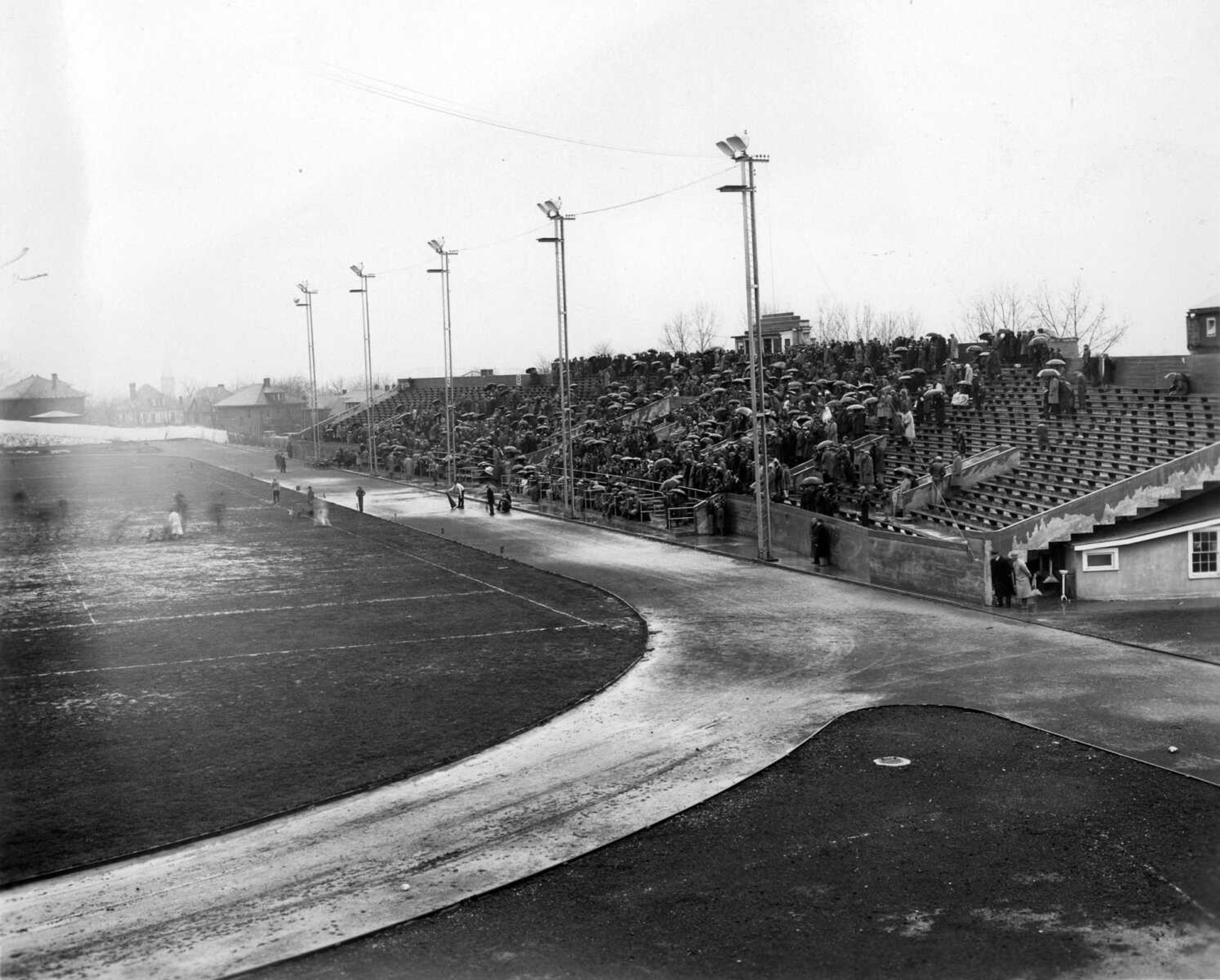The "What's Past is Prologue" series, an homage to William Shakespeare's "The Tempest," looks at events of the past that seem to reoccur later with remarkable similarities. Frank Nickell of the Kellerman Foundation for Historic Preservation, previously a longtime faculty member at Southeast Missouri State University, is primary historian for these articles, which will be carried intermittently in the Southeast Missourian.
This is the second in the series.
Houck Stadium, which today hosts Southeast Missouri State University football and women's soccer, turns 91 on Oct. 3, making the 10,000-seat facility the most senior gridiron venue in the Ohio Valley Conference. The next oldest, Austin Peay's Fortera Stadium, opened in 1946.
Cape Girardeau Central High School used Houck as its home football field until the team moved into Tiger Stadium for the 2011 season.
On Sept. 1, Southeast president Carlos Vargas and university athletics director Brady Barke jointly announced because of serious degradation of the concrete bleachers revealed in a structural assessment, the south grandstand would close indefinitely.

According to semoredhawks.com, the venerable Houck has had numerous facelifts over the years, including the following:

- 1963: Seating on the north side of the stadium is added.
- 1979: The press box is constructed above the south grandstand.
- 1992: Chairback seats added to the center section of the south grandstand.
- 2000: The initial FieldTurf playing surface was added.
- 2009: A five-story, 300-bed residence hall added adjacent to Houck's west end (Merick Hall).
- 2011: New state-of-the-art video scoreboard, new FieldTurf surface, new lighting installed.
Before Houck Stadium
At the turn of the 20th century, Southeast played its football games in the old Fairgrounds Park, now Capaha Park.
A track for horse races was also on the old fairgrounds as was a pavilion for Saturday night dances.

Louis Houck, a railroad magnate, lawyer and journalist, died in 1925 at the age of 84.
Houck's legendary 39-year association with the state college in Cape Girardeau led to efforts to memorialize him following his death. A splendid opportunity to honor the longtime businessman would come only a few years later.
Transforming an eyesore
"When you drove into Cape Girardeau from the west side in the 1920s, you passed a big, ugly stone quarry along Broadway Street," Nickell said. "The quarry was abandoned and full of trash because people dumped their garbage there."
Southeast, under the leadership of then-president Joseph Serena, moved to buy the quarry.
A Sept. 30, 1990, story in the Southeast Missourian captured the skepticism of the college's purchase.
"At first, many in the community scoffed at the idea of turning a five-acre, rat-infested, water-filled quarry into an athletic facility," the article read.
Built for $150,000 ($2.45 million in 2021 dollars), Houck hosted its first game Oct. 3, 1930 -- a 12-6 loss to Southern Illinois Normal, now SIUC-Carbondale.
Nickell said much of the credit for turning an eyesore into a stadium belongs to the longtime college superintendent of buildings and grounds at the time, Vernon L. Chapman.
"Chapman brought in hundreds of truckloads of dirt using trucks he bought for virtually nothing," Nickell said. "(Chapman) was a miracle worker and in my opinion, his name needs to be remembered somewhere on campus because he kept SEMO maintained when there was little money."
What's next
As Vargas and athletic administrators decide what will be the next iteration of Houck Stadium, Nickell recalled a novel idea from a former Southeast athletic director, Russ Sloan, who served from 1977 to 1979.
"Sloan was a go-getter who wanted to build a domed stadium for Southeast, similar to what the University of Northern Iowa now has," Nickell said in reference to the 16,324-seat UNI-Dome in Cedar Falls, Iowa.
Connect with the Southeast Missourian Newsroom:
For corrections to this story or other insights for the editor, click here. To submit a letter to the editor, click here. To learn about the Southeast Missourian’s AI Policy, click here.








